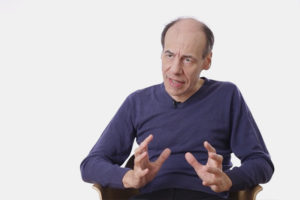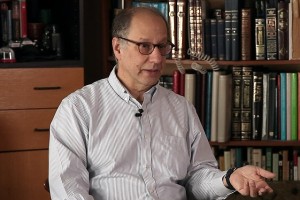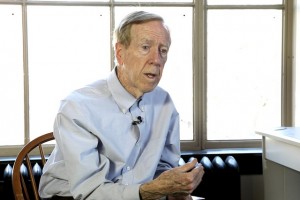Social Epistemology
Philosopher and sociologist of science Steve Fuller on collective and individualistic nature of knowledge, eli...
What is the role of modern museum in a digital world? How can we reorganize exibition space to have place for all collections? Professor of Romance Languages & Literature at Harvard Graduate School of Design Jeffrey Schnapp talks on the logjams on the way to make all museum collections accessible to audience.
So what are the questions that museums as an institution have faced? These questions are questions that interest me as a knowledge designer, as a digital humanist really has to do with what it means to be a guardian of a large corpus of cultural materials in the Internet age, in the digital age. The traditional definition of the museum was very much focused on the brick-and-mortar, the physical structure up the museum as the sort of device that in essence supports cultural programming, allows for certain modes of controlled access to the cultural record, tell stories of one kind or another, serves as a sort of point of conversation that encounter between the scholarly community and the general public.
The challenge of what we do with all these collections, what we do with all these data resources, how we make them matter, how we overcome some of the limitations of the analog world where we can’t exhibit that 85 or 90% or 95% even of objects that are too big or just too many to be exhibited. They’ll just have to wait their turn, obviously, maybe that waiting might last for many centuries. How through the creative and innovative use of digital platforms and resources do we create tools that allow that off site visit to actually break the logjam, to create meaningful modes of access, to create the possibility, for instance of doing things with collections.
Let’s take the example of a microscope or in other words a physical artifact that was part of a larger research process. Now that object if we treated as an isolated object which is of courses the traditional useological technique we will put it in the display case, we put a label next to it, maybe we put a little bit of a text that says ‘This was used by person X at a certain time’. Well, we’ve told a very small story. That object really signifies in the context of the whole structure of a laboratory, in the context of the whole structure of a research procedure, in the context of a story about optics, about how microscope and telescope design changed over the course of the history of each of those artifacts. In short the microscope tells many different stories.

Philosopher and sociologist of science Steve Fuller on collective and individualistic nature of knowledge, eli...

Harvard Senior Researcher David Weinberger on how filtering on the Internet is organized, and the web of knowl...

Mathematician Gilbert Strang on eigenvalues of matrices, lessons with millions of students, and loss of person...